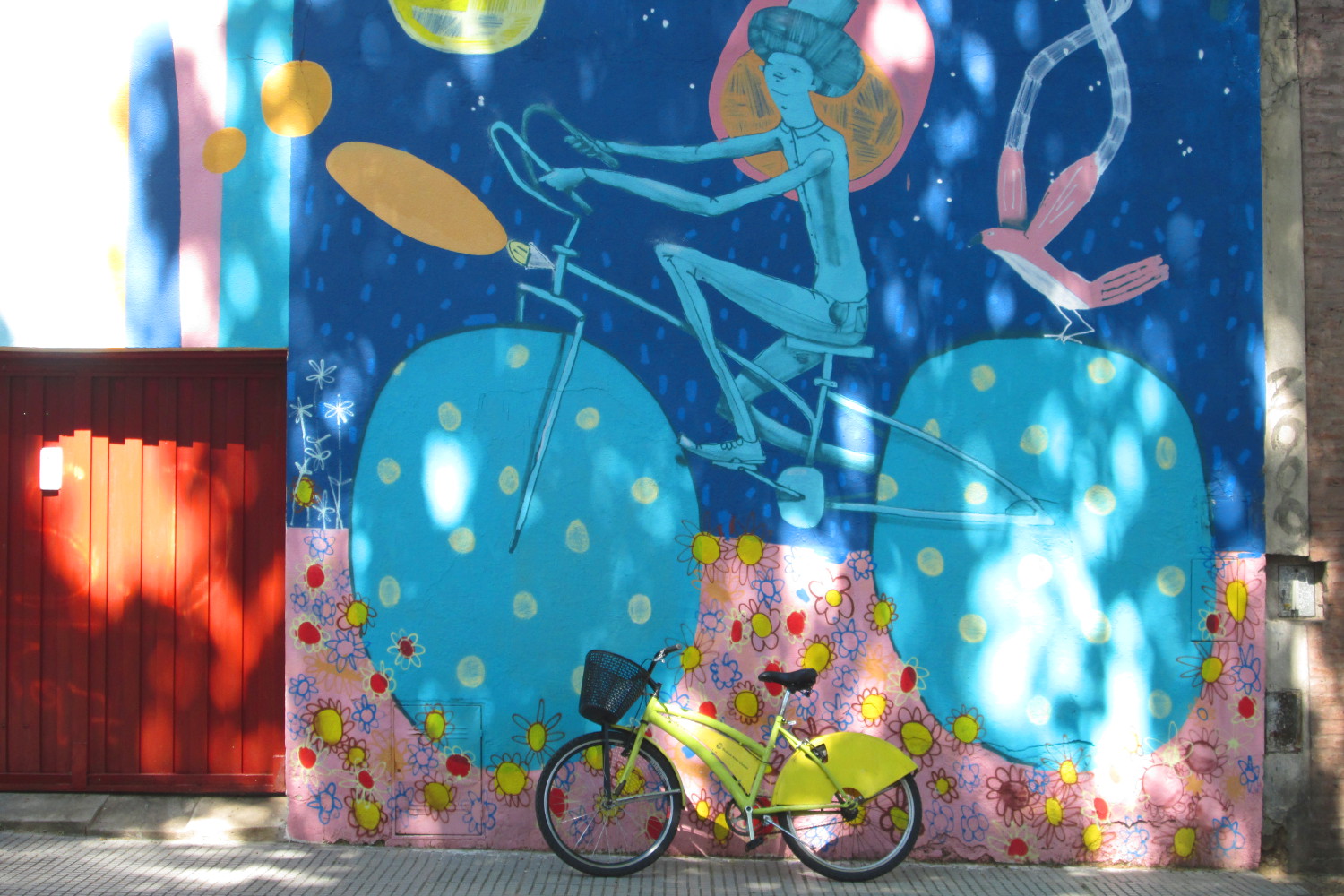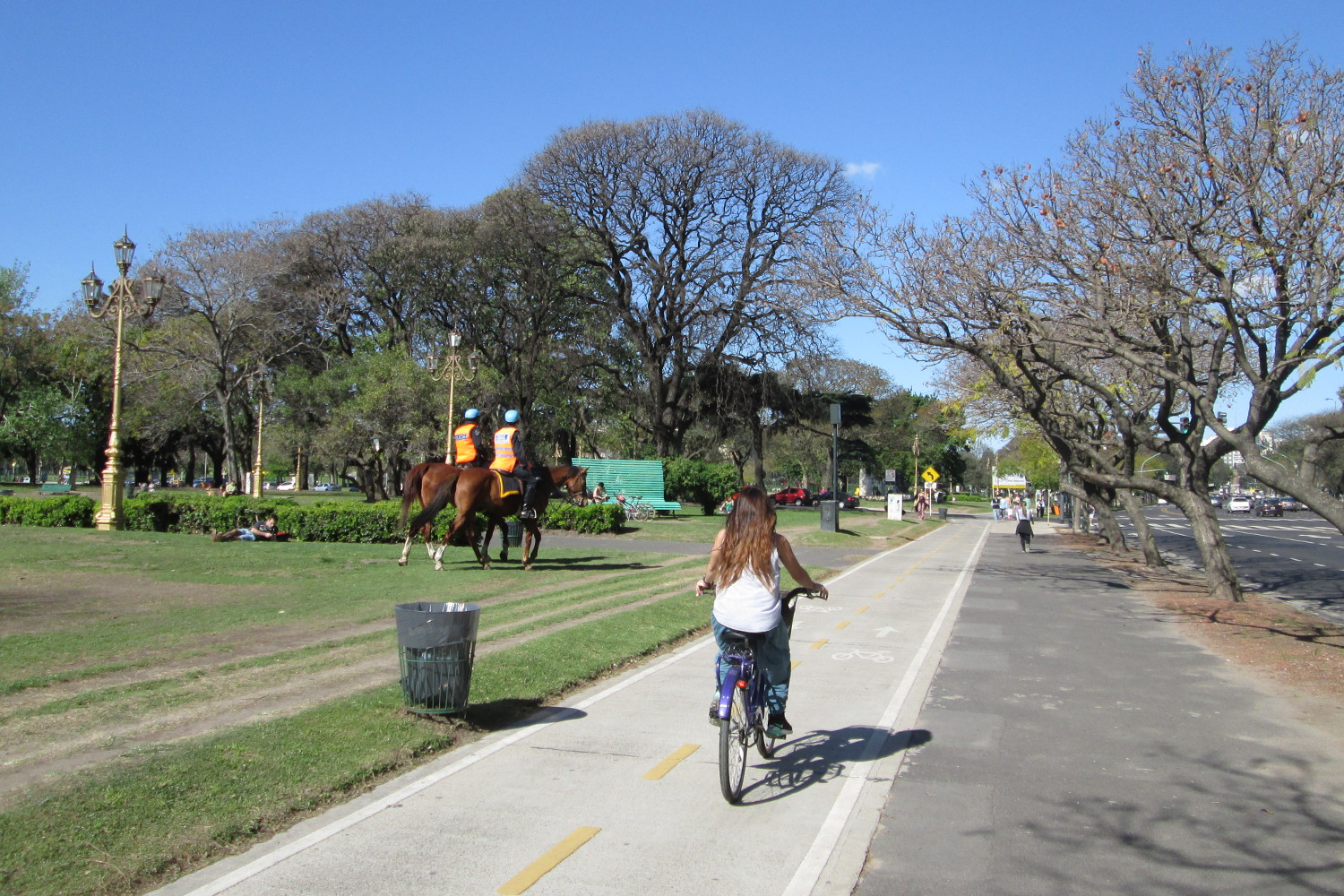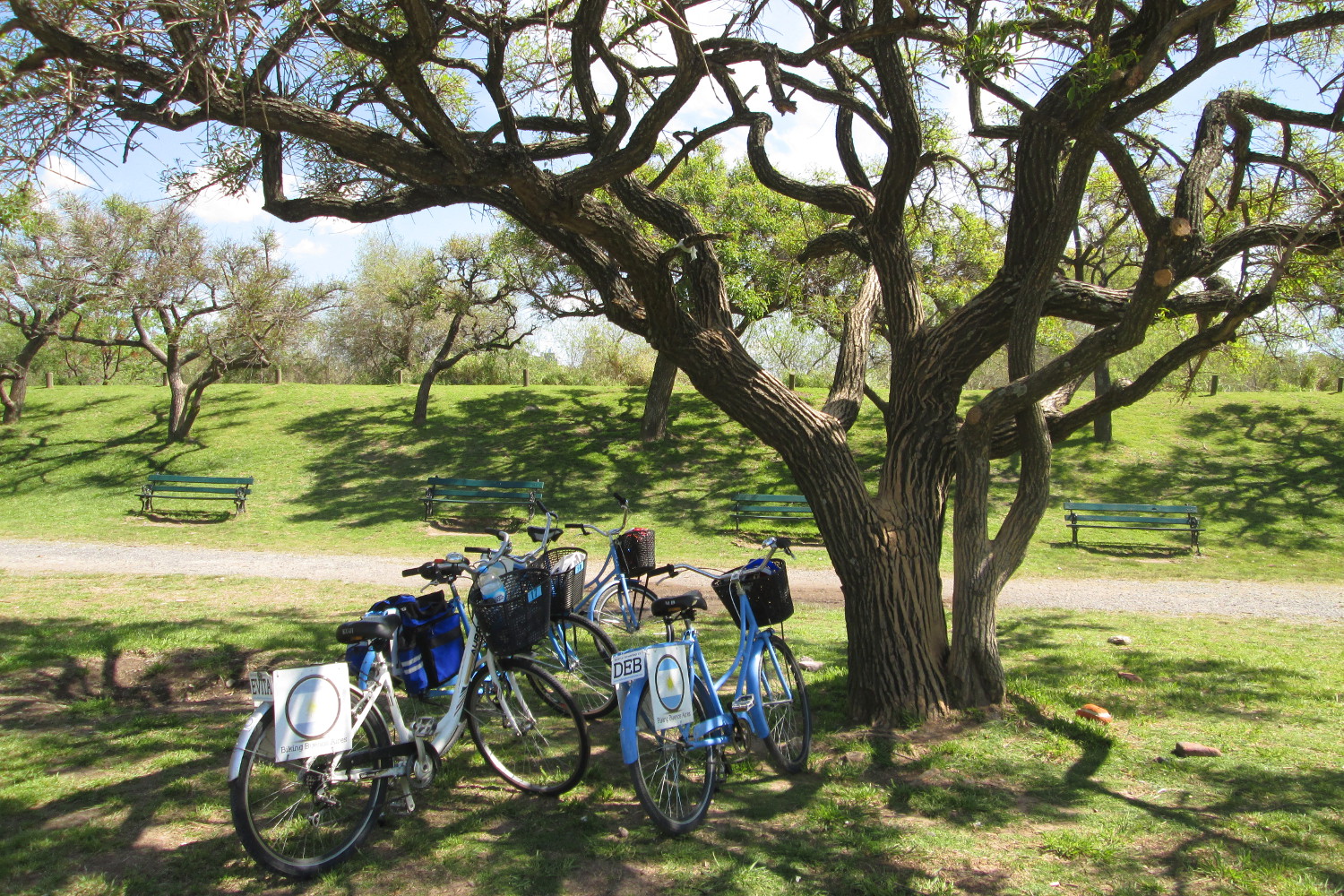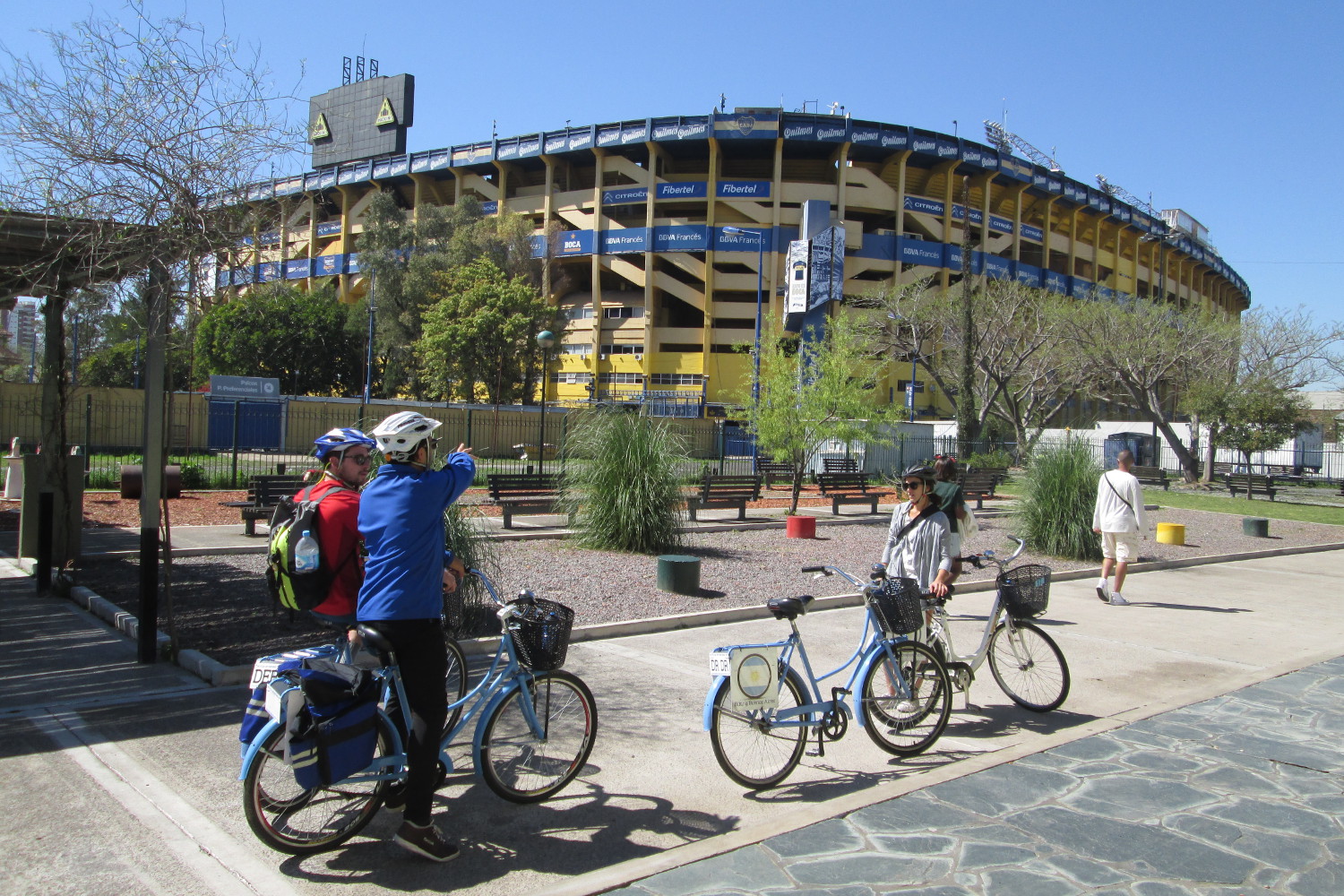Cycling around Argentina's capital, you’ll find yourself part of the city’s greatest charm: the everyday lives of its eccentric residents.

Maneuvering on two wheels, you'll be part of it all, overhearing snippets of conversation from sidewalk cafes, passing crumbling old buildings with bright murals and inhaling the scent of tree blossoms as you experience the BA's neighborhoods up close.
The first step is to find yourself some wheels. The Buenos Aires city government’s EcoBici scheme (buenosaires.gob.ar/ecobici) provides free bikes for up to an hour at a time. To use them, you need to first register at one of 32 bike stations around the city. Bring a photocopy of your passport ID page and immigration stamp. You'll be asked to provide the address and telephone number of your accommodation in Buenos Aires, create a pin code and sign an agreement. Once in the system, you can use the yellow city bikes for up to an hour before returning them or renewing the rental at any of the stations. There are helmets and maps available on request.
If you would prefer to rent a bike for a longer period, there are several hire companies in the city, including Urban Biking who hire out bambucicleta – hand made bamboo bikes – and offer cycling tours of Buenos Aires. Likewise, La Biclecleta Naranja does bike hire and tours from their base in San Telmo.

Buenos Aires has a network of bike lanes, which are generally well maintained, but it's good sense to keep your eyes open for potential hazards. Expect to encounter anything from motorbikes, trash cans, joggers, skateboarders, rollerbladers, dog walkers with up to a dozen pooches in their charge, dog poo, unicyclists, people on deckchairs drinking mate, potholes, ladders, parked cars and even a clown walking on stilts around the streets of Buenos Aires. An open mind and a bike bell are essential. Take it slow and remember that cycling is probably still quicker than taking a bus, and possibly even a taxi.
The Ecobici website (buenosaires.gob.ar/ecobici) has a handy map of the city’s bike lane network, and another useful online tool for planning journeys is ComoLlego (comollego.ba.gob.ar). Selecting the 'bike' option will suggest a route that uses cycle lanes wherever possible. When there isn’t a cycle lane,cyclists have priority in the lane furthest left on one-way avenues, while buses use the lane on the right.

While cycling around the city is fun in itself, having a destination and a route in mind can make for the best day out. One option is to start in Plaza Italia in Palermo and take the bike lane on Jorge Luis Borges, which becomes Serrano, all the way up through the neighborhoods of Palermo Soho and Villa Crespo (a good place to stop for coffee). Here, turn left onto the bike lane on Padilla and continue on to Bravard until you reach Parque Centenario, the circular park right in the center of the city in the neighborhood of Caballito (4km from Plaza Italia). The park, which is surrounded by secondhand bookstalls and has a weekend market, is usually packed with porteños (Buenos Aires locals) relaxing with a book, playing guitar or doing yoga. There are city bike stations at both ends of this route in Plaza Italia and Parque Centenario.
Alternatively, from Plaza Italia, you can cycle down Sarmiento to the Bosques de Palermo (Parque Tres de Febrero) and check out the rose gardens and the rollerbladers and joggers circling the lake. From here, take the cycle lane all the way down Avenida Libertador to Plaza Retiro. Along the way, you'll pass the Jardín Japonés, Plaza de Chile, the Museo Nacional de Bellas Artes and Plaza Francia. Follow the bike lane across the plaza and then left onto San Martin and right on Avenida Antartida Argentina to Puerto Madero (10km from Plaza Italia). Here, you can cycle around the docks, past the city's most striking bridge, the Puente de la Mujer, before reaching the Reserva Ecológica Costanera Sur. Stop for a well-deserved bondiola (pork shoulder) sandwich from one of the parrilla stands along Avenida Int. Hernán M. Giralt. If you've still got energy, you can also cycle around the reserve itself, an eight kilometer circuit through natural parkland teeming with butterflies, rare birds and wild flowers, with views out across the Río de la Plata.

A number of bike tours are offered around Buenos Aires that offer the chance to learn about the city as you cycle. Biking Buenos Aires offers highly recommended sightseeing tours, including the full day Ultimate City Tour. Starting with coffee and croissants at their office in San Telmo, the tour includes neighborhood stops and breaks for mate (Argentinean tea), alfajores (chocolate biscuits with dulce de leche caramel) and a lunch stop at an outdoor parrilla. The pace is easy, the guides are friendly and knowledgeable and the tour covers a lot of ground, figuratively and literally (the route is 26km long), providing a sound historical overview and plenty of cultural background. Other companies offering bike tours include Urban Biking and La Biclecleta Naranja.
With typical Argentine passion, Buenos Aires cyclists view their bicycle as more than just efficient modes of transport. On the first Sunday of every month, the ‘Masa Critica’ (Critical Mass) gathers at the Obelisco at 4pm and bikes take over the streets of the city. The aim of the movement is to celebrate cycling and reassert cyclists' rights on the streets of Buenos Aires. If you happen to be in Buenos Aires when Masa Critica is on, this can be a unique way to get a closer look at the city's thriving bike culture and exploring BA at the same time.